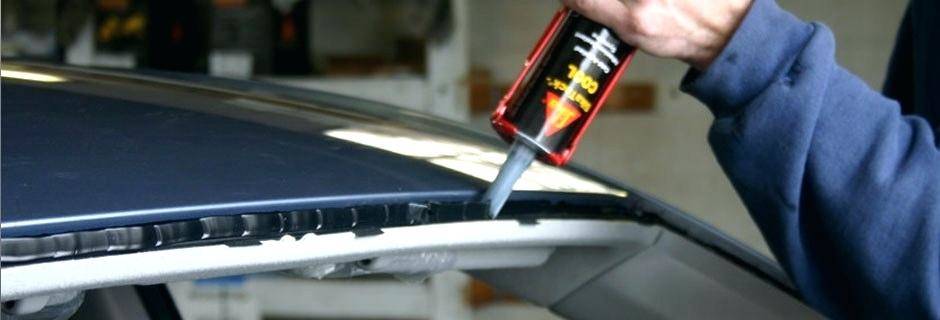Each time you go for a car windshield replacement, you may wonder if you can drive right after the windshield is replaced. The answer is NO. You should wait for at least an hour before you should drive. But there are many factors on which this time depends and ideally, your service provider should inform you about it.

First, why should you even wait after a new windshield replacement?
The main reason why you should sit is the adhesive used in windshield replacement. Adhesives have different curing times. Though most industry-approved adhesives tend to cure within an hour after applying to the car body. It basically depends on environmental factors like temperature and humidity.
If you drive immediately after the new windshield is replaced, it can disorient the windshield from its position or may cause some gaps between the windscreen and the car body. In case of any mishap/accident, this can be fatal. The windshield is not only to look through or just to keep air and dust away from you. It’s an integral part of the car’s structural strength. The windshield holds the car roof and hence in case of an accident your car roof doesn’t collapse immediately. If your windshield orientation is not correct just because you have driven your car immediately after windshield replacement, its structural strength is compromised. Now your car’s roof is prone to collapse in case of a serious accident. Even if something fell off the roof it will collapse as this support base is compromised.
Also, the windshield gives support to the airbag deployment during an accident. If your car windshield is not at the correct position or loose due to ineffective PU sealant curing it can affect the airbags functioning.
Now let’s see what is the minimum time you should wait before you drive and what are the different factors on which it depends.
The minimum time to drive after a windshield replacement is 1 hour. In some cases, it can be more than an hour. It’s basically the time that is required by polyurethane/PU sealant to cure. Though to cure completely, it may take 2-3 days, once its outer layers get cured, you can drive your vehicle.
Hence, it is important that your workshop inform you of the minimum time you should wait before driving whenever you get a new car windshield. Also, you should also ask if they fail to do so. After all, your safety is your responsibility.
Now you may ask that your workshop has put some tape on the windshield to keep it at its position, so should you still wait?
The answer is YES, you should. The tapes at the top or on the side of the windshield are to keep the windshield in position after the primary layer of polyurethane is cured and these are just precautionary. So, these tapes support the adhesive to keep the windshield at the correct position for about 24-48 hours after the new windshield replacement so that the inner layers of PU sealant also get cured properly.
Next comes the question, is the minimum drive-away time (MDAT) the same as the safe drive-away time (SDAT)?
A few years ago, the automotive industry used the term Safe Drive Away Time (SDAT) but discouraged its use in favor of Minimum Drive Away Time. As the term, Safe can be legally incorrect and can be a liability for the service provider. Technically SDAT and MDAT are two different terms and SDAT was used wrongly instead of MDAT.
SDAT is the safe time in which PU Sealant cures to the level that you can drive your car safely without worrying about windshield disorientation due to jerks. While MDAT is the minimum time after which you can drive your car normally, you need to take care of the speed to avoid any kind of serious jerk to the windscreen.
Now that you know that to maintain safety you should at least keep the car ideal for at least an hour after the new windshield replacement. Let’s examine what can affect the Minimum Drive Away Time (MDAT):
- Quality of Adhesive
- Type of vehicle and Glass Size
- Temperature and Humidity
- Quality of Adhesive: The MDAT of 1 hour that we have suggested is for OE-approved quality adhesives / PU sealants at normal temperature i.e. 23°C and 50% RH. But here is a catch, if your workshop uses a substandard PU sealant, this curing time increases, and hence you may need to wait for 2-3 hours or more before you can drive. You should ask your workshop for minimum drive away time.
- Type of Vehicle and Glass Size: MDAT also depends upon the type of vehicle and type of glass that needs to be replaced. MDAT for back glass is about 30 minutes at standard temperature and humidity, also MDAT for cars with large windscreens, buses, and other commercial vehicles that have large is more than 2 hours as the thickness of PU sealant required to hold the glass increases, the curing time also increases and as a result of our minimum drive-away time also increases.
- Temperature and Humidity: The curing time varies with absolute relative humidity i.e. temperature and relative air moisture. In general, curing varies between 2.5mm – 4mm for the first 24 hours at 23°C and 50% RH. But it may vary if the climate variation is high in a particular country. You should refer to the product data sheet for more information regarding curing time and should check with your workshop for more information.
Curing depth in mm in first 24 hours for Sikaflex
| 20% | 40% | 50% | 60% | 80% | |
| 10°C | <1 | 1 | 1.5 | 1.5 | 2 |
| 20°C | 1 | 2 | 2.5 | 3 | 4 |
| 23°C | 3 | ||||
| 30°C | 1.5 | 3.5 | 4.5 | 4.5 | 7 |
| 40°C | 2-3 | 3-5 | 5-6 | 6-7 | 7-8 |
Generally, in summers at high temperatures and high humidity, the curing rate is higher than in winters. In some countries under sub-zero temperatures, special PU sealants need to be used.
